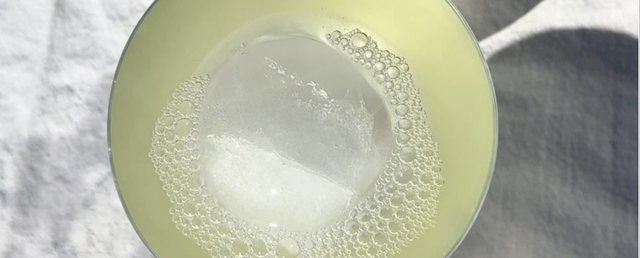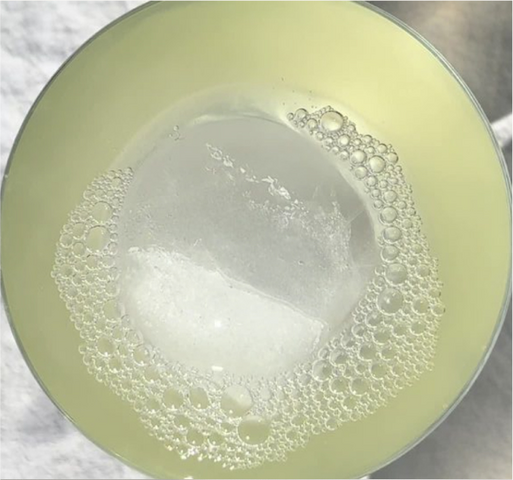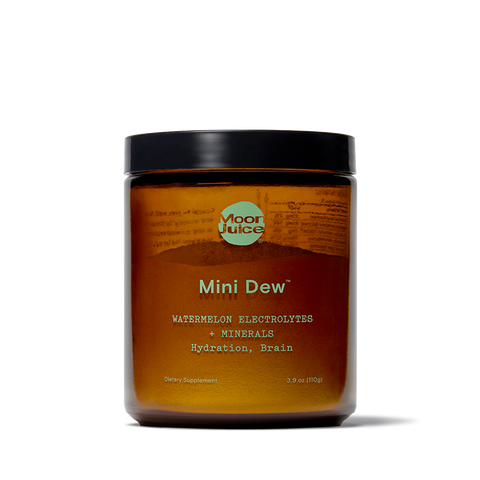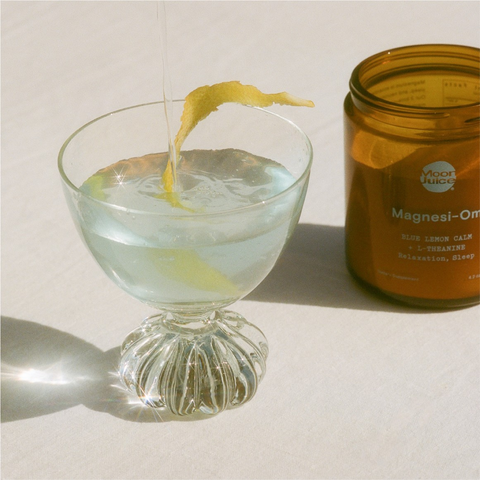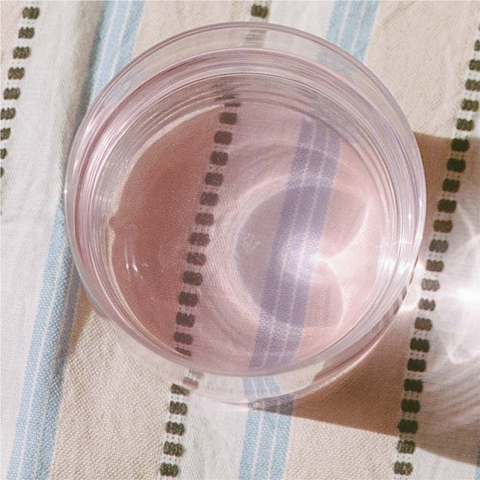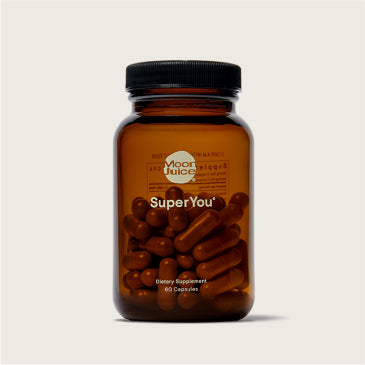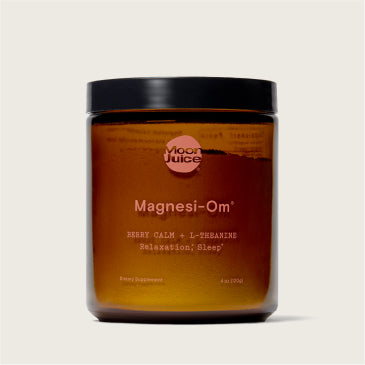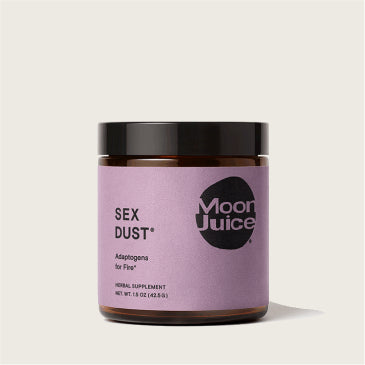Health enthusiasts claim this simple drink, sole water, can result in massive health benefits — from supporting detoxification and improving digestion to helping with weight loss and hormonal imbalance. But what does the science actually say about the health impacts of pink Himalayan salt in water?
In this article, we’ll explore what sole water is, delve into the science-backed Himalayan salt water benefits, discuss important health considerations to keep in mind before incorporating it into your routine, cover how to make it, and include a convenient way to add pink salt electrolytes to your water for a more enjoyable hydration experience.
What is Sole Water?
Sole water is water infused with large amounts of Pink Himalayan salt (primarily mined in Pakistan), consumed for its supposed health benefits. Supporters of sole water often recommend adding Himalayan salt to water for hydration, detoxification, and many other benefits. While some claim that sole water helps improve health in various ways, there’s no scientific research directly on sole water.
However, the science on sodium, one of the electrolytes present in pink Himalayan salt, is clear — it plays an essential role in controlling fluid balance within the cells of the body. An electrolyte imbalance can cause water loss and dehydration, especially when sweating or exercising.
Benefits of Drinking Sole Water
Unfortunately, a large percentage of the US population suffers from mineral deficiencies or imbalances, with around 75% experiencing chronic dehydration, leading to symptoms like brain fog and fatigue. Although studies suggest that hydration with sodium-rich fluids can benefit runners by reducing dehydration and sweating, and low sodium diets are linked to disrupted sleep, these findings didn’t specifically research sole water — they simply researched sodium.
So, while many individuals report various sole water benefits like detoxification, improved digestion, and balanced blood sugar, these claims are only anecdotal. More research is needed to verify the supposed benefits of Himalayan salt in water.
Health Considerations of Sole Water
Before drinking sole water with Himalayan crystal salt, it's important to note the lack of direct scientific research backing its health benefits. If you're considering trying it, be mindful of your personal health since high salt consumption, even if it’s high in pink Himalayan salt minerals, can have adverse effects.
Currently, the recommended daily sodium intake is less than 2,300 milligrams, yet most Americans exceed this amount daily due to the foods they eat and the added white table salt that’s sprinkled on every meal.
High sodium intake is serious — it can elevate blood pressure and increase the risk of osteoporosis, kidney stones, and other chronic diseases. Individuals who are salt sensitive or have health conditions such as high blood pressure, kidney disease, or heart failure should avoid Himalayan pink salt sole water because of its high salt content.
How to Make Sole Water
Himalayan pink salt sole water is easily prepared at home and requires just a few simple steps. Here's how to make it:
Ingredients
- Pink Himalayan salt
- Purified water
Steps
- Add pink Himalayan rock salt to a glass jar until it's a quarter full.
- Fill the remaining space in the jar with filtered water.
- Let it sit for 12–24 hours.
- To consume, dissolve one teaspoon of the concentrated “sole water” salt mixture in an 8-ounce glass of purified water daily.
While there are many benefits of Himalayan sea salt, it's important to note that sole water specifically lacks direct research-backed benefits.
The Hydrating Benefits of Mini Dew
Mini Dew™ is a convenient way to support daily hydration goals while minimizing unnecessary sodium intake. It’s a 2-in-1 electrolytes + minerals drink powder that aids hydration and brain function. Mini Dew™ contains:
- Microplastic-free pink salt electrolyte: Maintains optimal hydration by balancing water levels in and around cells.
- Ionic trace minerals: Provides essential trace mineral content for improved well-being and energy.
- Chelated essential minerals: Enhances cognitive function.
Our electrolyte drink powder tastes like organic watermelon or pomelo, has added minerals, and a dash of Himalayan pink salt. It instantly dissolves in water and contains zero sugar and zero fillers. If you’re looking to easily add electrolytes to water, simply mix 1 tsp of this electrolyte drink powder in 12 oz of filtered water to boost hydration.
Takeaways
Sole water has attracted attention for its supposed health benefits, but it's crucial to approach these claims with caution. The lack of direct scientific research on this drink makes it important to be careful when trying it. Before integrating sole water into your routine, consider your individual health status and consult with your healthcare provider if you have any preexisting health conditions.
Exploring alternative methods of hydration, such as adding pink salt electrolyte and mineral powder to your water, can provide a convenient and enjoyable way to support your larger hydration and health goals. You can support electrolyte levels and your daily mineral intake with Moon Juice.

Sources
- Exploring Our Fluid Earth. Traditional Ways of Knowing: Salt Harvesting. https://manoa.hawaii.edu/exploringourfluidearth/chemical/chemistry-and-seawater/salty-sea/traditional-ways-knowing-salt-harvesting
- National Library of Medicine. An Analysis of the Mineral Composition of Pink Salt Available in Australia. https://www.ncbi.nlm.nih.gov/pmc/articles/PMC7603209/
- Oxford Academic. Sodium-Restricted Diet Increases Nighttime Plasma Norepinephrine and Impairs Sleep Patterns in Man. https://academic.oup.com/jcem/article-abstract/56/3/553/2675275
- University of Alicante. Is sodium a good hyperhydration strategy in 10k runners? https://rua.ua.es/dspace/bitstream/10045/77858/6/JHSE_13-4_10.pdf
- US Food and Drug Administration. Sodium in Your Diet. https://www.fda.gov/food/nutrition-education-resources-materials/sodium-your-diet
- National Library of Medicine. Dietary Sodium and Health: More Than Just Blood Pressure. https://www.ncbi.nlm.nih.gov/pmc/articles/PMC5098396/

